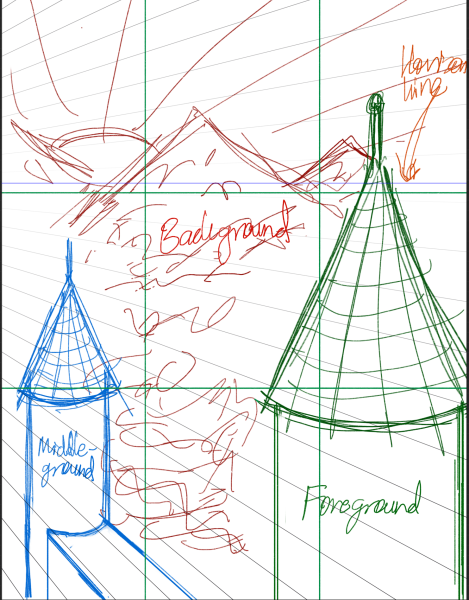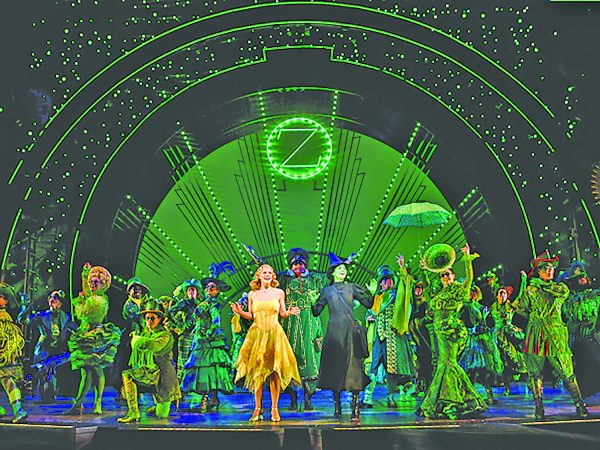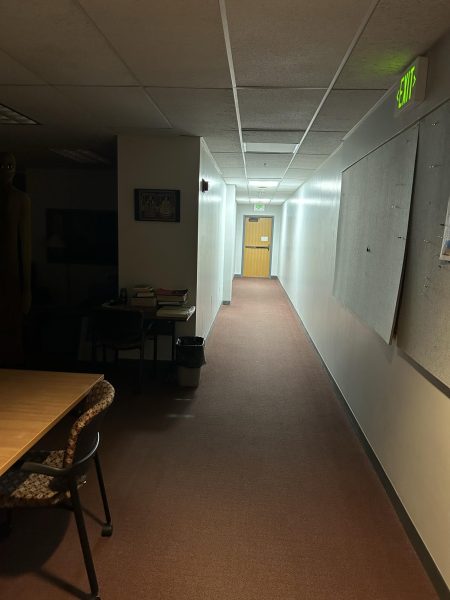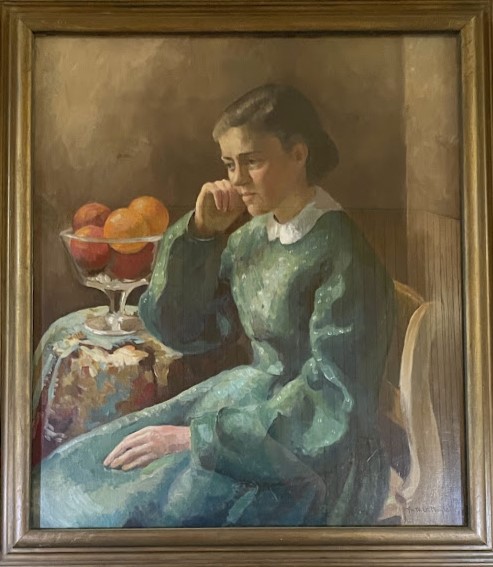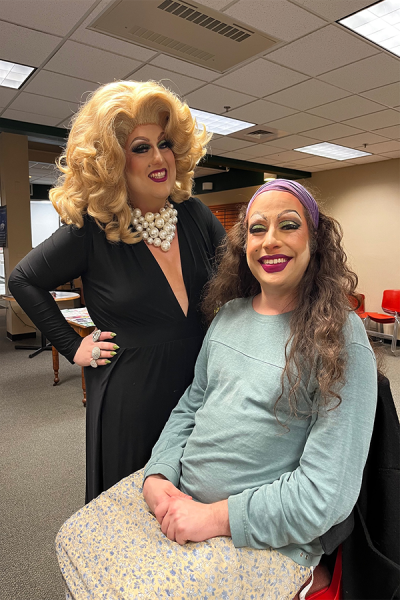Dibden puts on virtual show
“The Monument,” written and performed by Northern Vermont University-Johnson students, brings small town life in the COVID age to the small screen.
The homegrown project, done in collaboration with the Off Center for the Dramatic arts, which consulted on the play, was written and performed by students in the Performance Arts and Technology Program. Isaac Eddy directed, and the show was selected for showing at the Kennedy Center American College Theater Festival.
What makes this performance special, in addition to the level of student engagement, is the presentation. With live stage performances in front of an audience not possible during COVID-19, the show has imaginatively adapted the production to an entirely relatable medium: Zoom rooms.
The entire show takes place on a zoom call of the town select board of the fictional village of Waldenburgh, Vermont. The cast, as members of the board and townsfolk, are arranged in a typical Zoom gallery, each of them portraying colorful characters that might be found in any small town around the state, from the well meaning hippie archetype to the curmudgeonly and hyper traditional town select board chair.
James Stowell leads the show as the select board chair James Smith. With him are board members Makenzi Edwards as the co-chair of the board, Karen Wessex; Cheyann Tooman, playing Secretary Marguerite Hoffman; Athena Abromowitz as treasurer, Alex Gray; and Addison White as Ellowyn McDaniels, the parks and recreation manger.
In addition, the cast includes Caira Adams who plays Caira, a concerned citizen; Rebecca Lynne as the sculptor Mary Jane Smith who has been commissioned to potentially replace the monument, Krystina Broscko as toxic masculinity lotion girl, and Jess Beliveau as town pianist Margot Katherine.
Beliveau and Timothy Pinckney composed the music of the play.
One of the most notable aspects of the production aside from its brilliantly adapted Zoom format is the way that the project uses audience participation as an interactive medium. Viewers of a live showing can weigh in on the town’s decisions and will even be asked to decide the fate of the eponymous monument that is the central theme of the play. Whichever way the virtual town votes will affect the outcome of the play, which has two possible scripted endings depending on a yea or nay vote.
Arguably the most stunning aspect of this play was the costuming and set design. “The Monument” was a beautiful experiment in using what you have on hand. Here, the Zoom backgrounds were the scenery, with most select board members Zooming in from their own homes exactly as they would in reality today. This leant a hominess and authenticity to the production that would have been lost had the play been a live performance on a traditional stage.
The costuming too was a delight to observe. White’s character Ellowyn is dressed to the nines as everyone’s favorite town hippie, replete with headscarf and garish makeup. Even the uptight, conservative board chair was bedecked in a classic flannel buttoned all the way to the neck. Such details lent themselves to the authentic feel of the narrative and grounded the performance in a way that was entirely refreshing.
The iteration of the performance viewed for this review was entertaining and well done, though the audio and visuals left a little to be desired on the other side of the recording process. There is little doubt that watching this performance firsthand in the actual medium is the superior method of experiencing the show.
Performances were on point and well crafted, concerning both the cast and the director. Without traditional blocking and scene work, the show had to lean more on the cast and the presentation, both of which exceeded expectations with ease.
The novelty of the show was its greatest asset. Such a bold exploration of what theater means in this new time of quarantine highlights both the artistic prowess and willingness to bend the rules that is the hallmark of the Johnson theater program. The writing too was well thought out and carefully crafted, tackling many relevant issues while also allowing for moments of humor and reflective artistry.
After watching the show, only an hour and five minutes in length, I found myself wanting more, and I can see why the performance and its members, both on and off the stage, were selected for attendance at the Kennedy Center American College Theater Festival. This is exactly the kind of “weird art” that Eddy and the Johnson community should be proud to have represent them, and it certainly is worth a watch or three, if only to experience the true joy of what makes this theater program special.

Senior, BFA Creative Writing major from Craftsbury, VT.
Resident Punk Scientist and Basement Medicine Web Wrangler.
I love science and writing, and...



